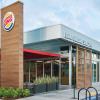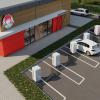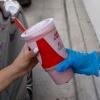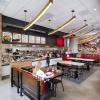The pandemic brought major changes to the restaurant experience and forced decision makers to adjust operations to meet evolving demand and provide safe service for their customers. Of the shifting priorities, experience taught the industry that health, safety and convenience were paramount to ensuring customers felt comfortable. Research from a recent Nationwide Agency Forward survey has since confirmed that these priorities remain true today.
Of customers that have observed these changes made by restaurants since the start of the pandemic:
- 1. Cleanliness: 94 percent of customers feel positive about the improved cleaning/sanitation practices.
- 2. Expansion of Service: 81 percent feel positive about the addition or expansion of food delivery/take-out services.
- 3. Digital Adoption: 72 percent feel positive about the use of mobile ordering/payment.
In fact, the data shows that 3 in 4 (77 percent) restaurant visitors rate their experiences today as good or excellent. This may be attributed to these now common practices. Although the restaurant industry has bounced back from the pandemic, it is navigating new challenges that could impact these positive assessments. From inflation and supply chain issues to labor shortages, restaurant decision makers now face new financial implications that are directly impacting customers. 6 in 10 restaurant decision makers cite inflation/rising costs and difficulty acquiring food and supplies as challenges they currently face. Of those struggling with inflation, 28 percent have increased prices, 23 percent changed menu items, and 22 percent changed portion sizes in response.
Fast-food chains had their own unique set of challenges, having experienced a slowdown in equipment manufacturing due to low labor levels during the pandemic. Double-sided grills, for example, were being delivered three or more months from order compared to the typical one-month timeline. The cost of stainless steel, which impacts much of the kitchen equipment, went up significantly. Because of the supply chain constraints, stores shifted food products between locations depending on sales due to less frequent deliveries. As a result, food costs were impacted.
Fortunately for restaurant decision makers, staffing levels are recovering from COVID-19 lows. The industry is projected to grow by 500,000 jobs in 2023 and surpass pre-pandemic levels, but the historically low unemployment rate continues to present challenges. Decision makers are doubling down on their employee-focused mindset. This includes bringing greater flexibility for employees, offering incentives for retention and building awareness for all available benefits like 401(k) offerings, college reimbursement and health insurance.
Despite these new concerns, restaurant decision makers are feeling optimistic about the future of the industry. According to the same Nationwide research:
- 1. Over 8 in 10 (82 percent) say they are doing better financially than expected.
- 2. Nearly 3 in 4 (72 percent) report an increase in their restaurant’s revenue over the past six months and 93 percent expect increases in next 6 months.
- 3. Forty-four percent say the pandemic had a positive impact on their restaurant’s financial situation.
In 2023, the restaurant industry is projected to reach $997 billion in sales, more than $100 billion higher than 2019 before the pandemic. Restaurant decision makers credit the pandemic for increasing their focus on top-line sales and profit, food safety, relationships between management and employees, equipment needs and cost controls, and subsequently boosting their confidence about the future of their business.
With the industry outlook looking up, restaurants are now focused on maintaining this momentum in the face of a looming recession. To prepare themselves, more than 4-in-10 restaurant operators plan to invest in equipment or technology to increase productivity. Before making changes, restaurant owners should be aware of the invisible threats they could open their business to, like increased susceptibility to cyber-attacks that come with a greater reliance on technology or unnecessary expenditures with a high price tag due to inflation.
This is the time to balance business acceleration with protection and ensure commercial coverage is keeping up with the latest ordering innovations and equipment. Curiously, 32% of restaurant decision makers are actually considering reducing coverage – a decision that could be costly if an uncovered loss occurs. Keep an eye on coverage levels as sales change, remodels take place and supply costs continue to fluctuate. Reviewing coverage plans with an agent each year can help.
The restaurant industry has the ingredients to shine through a recession with the right considerations and business decisions.
Linda Stueber is Senior Vice President of the Middle Market Commercial insurance team at Nationwide. She has spent more than 30 years in the commercial property and casualty industry. Pam Farber, one of Dave Thomas’ daughters, is a Central Ohio-based business leader. She and her sisters have been a Wendy’s franchisee for 20 years.


















